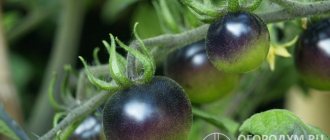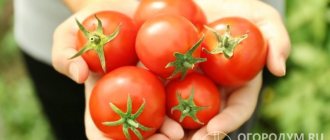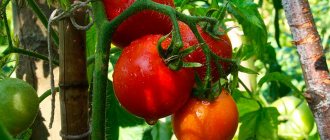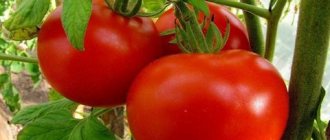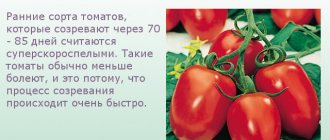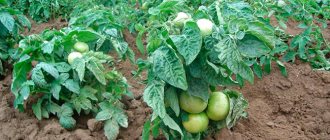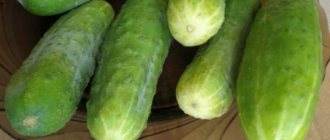The work of Dutch breeders is aimed at creating tomato hybrids that are maximally adapted to the climatic and agrotechnical characteristics of regions around the globe. Dutch holdings develop tomato varieties for year-round cultivation and undergo strict certification and pre-sale training.
Features include disease resistance, adaptability to growing conditions - bush height, self-pollination, harvest amount.
This article contains hybrids that are grown in Russia and are suitable for greenhouse conditions and open ground.
The best varieties of Dutch tomatoes
Every year, new tomatoes are produced in the Netherlands - tall and short, early and late, with red, purple, crimson, orange fruits. Some varieties are suitable for planting both in a greenhouse and in the field, others are only suitable for protected soil.
The advantages of hybrids created by Holland include:
- resistance to unfavorable environment;
- presence of immunity to diseases;
- high productivity;
- interesting shape and color of tomatoes.
The mid-season indeterminate tomato Ivanhoe, which is planted in a greenhouse, is popular among gardeners. The early summer residents highly appreciated Berberan, Benito, Belle, Donald, Diadema.
Positive aspects of street culture
The greenhouse is deservedly considered a more reliable option. However, growing tomatoes in soil has a number of advantages:
- vegetables turn out more tasty and healthy;
- attacks of pests and diseases are less aggressive and not so destructive;
- lower financial and labor costs;
- The yield of simple varieties is practically not inferior to that of hybrids.
Seed companies offer vegetable growers a choice of both hybrid and non-hybrid varieties.
For open ground
Hybrids also have a disadvantage. The taste of the fruits is inferior to the usual varieties, but they do not leak juice during transportation. When ripened in an area illuminated by sunlight, tomatoes acquire sugar content and a weak aroma.
In favorable climate conditions, gardeners prefer to plant tomatoes in the garden.
Polfast
The hybrid variety is distinguished by a powerful, low bush, can withstand drought, and is not affected by common diseases. The fruits also set in cool weather and ripen 3 months after the sprouts appear. Tomatoes of the Polfast F1 hybrid when ripened have:
- rounded shape;
- scarlet color;
- elastic skin;
- sweetish pulp.
The ribbed fruits are collected in clusters and weigh more than 100 g. Tomatoes are suitable for winter preparations and placed in salads.
Debut
The determinate hybrid is valued for its early harvest; the first tomatoes are picked earlier than after 3 months. Low-growing bushes do not have time to get late blight. The plant is practically not affected:
- leaf spotting;
- fusarium;
- verticillium wilt;
- Alternaria blight.
Up to 5 kg of round tomatoes of classic color are removed from a tomato bush. Under favorable conditions and proper care, individual specimens weigh 230–250 g.
Tarpan
The hybrid variety is adapted to temperate climates. On compact, weakly leafy bushes, clusters of 5 or 6 inflorescences are formed. As tomatoes ripen, they acquire a pink color and a sweet taste. Their pulp is juicy and the skin is dense, so the tomatoes are well stored and do not lose their appearance when transported over long distances. The weight of individual copies is 200 g, per 1 sq. m on average, 9.7 kg are torn.
Tanya
The determinate variety is distinguished by spreading bushes with large leaves and a height of about 60 cm. The tomato tolerates heat well, does not require formation and pinching, is not affected by verticillium wilt, gray spot, and does not have time to get late blight. The first ovary appears under the 7th leaf.
For 1 sq. meter, when planting 5 bushes of the Tanya F 1 variety, more than 4.5 kg of round tomatoes are harvested 80 days after the sprouts emerge.
The fruits are pink in color, and the flesh also has the same shade. Tomatoes weigh about 170 g, the elastic skin prevents the tomatoes from cracking.
Sultan
The hybrid feels comfortable in the Krasnodar Territory, the Caucasus, and is grown by gardeners in the Voronezh and Belgorod regions. On compact low bushes, tomatoes are tied in tassels. Ripe tomatoes weigh about 200 g. The brightly colored fruits have up to 8 chambers with seeds.
The Sultan hybrid is valued for its high yield; one plant produces up to 5 kg of tomatoes, which ripen early, are well stored and transported.
Super Red
The hybrid grows well in climates with hot and dry summers. The variety is not affected by fusarium and does not suffer from viral infection. On strong, low bushes, tomatoes of a classic color ripen a little more than 2 months after germination. The weight of individual fruits reaches 200 g. The tomato is valued for its high productivity and excellent transportability.
See also
Description and characteristics of the best varieties of cream tomatoes
Read
SYNGENTA SEEDS
Syngenta SEEDS is a Swiss company that is represented on the world market as a manufacturer of plant protection products and seed material for various crops. Syngenta has its branches in all countries of the world, including Russia.
The tomato seed producer is located in Holland, in the small northern town of Enkhuizen. The branch operates laboratories and scientific complexes for breeding and improving seed material and studying the characteristics of agricultural crops.
Arnold
The Arnold tomato has been grown since 2009. It is a high-yielding, mid-early tomato. Fruit ripening is noted after 100-110 days. The plant is tall and indeterminate. Arnold is recommended to be grown in summer greenhouses. There are no restrictions on zoning:
- The tomatoes are small, uniform in size and shape. The color of the ripe berry is red, but there is also a variety with yellow fruits;
- weight 90 g. 1 m2 brings 34 kg;
- The culture has a high immunity and is resistant to mosaic, fusarium, verticillium, and cladosporiosis.
The Arnold tomato is grown as an independent crop or used as a rootstock. For the mother plant, take the Macarena hybrid.
View this post on Instagram
Publication from INNOVA best of seeds (@innova.seeds.ua) July 14, 2020 at 6:16 PDT
The Paronset variety shows high productivity. It is zoned in the Central region. Productivity is 32-36 kg. Weight 160 g.
Baribine
Another variety of tomatoes for growing in greenhouses is Baribine. The culture is early, fruit ripening occurs in 80-90 days. The tomato has high taste characteristics. It is used for salads and for preparing culinary dishes. Baribine indeterminate, large-fruited:
- tomatoes weigh 200-210 g. In practice, gardeners receive fruits weighing more, up to 300-400 g;
- fruit pulp is red. The berry shape is round. All fruits on the bush are aligned and have an attractive presentation. They tolerate transportation well;
- Baribine's yield is 17 kg/bush.
Breeders have protected tomatoes from infections, but plants show good immunity only with proper care. It is necessary to introduce fertilizing, water and loosen the soil.
Tomato fertilizers are introduced 4 times. After the adaptation period - potassium, phosphates. After 2 weeks for leaf formation - no ammonia nitrates.
During the flowering period - boron and magnesium to strengthen the buds and stimulate the ovary. During the fruiting period, mineral complexes are used to increase yield.
Altadena
For winter cultivation in greenhouses, the Altadena variety is used. It is zoned in the Central and Northern regions. The plant is medium-sized. The bush is not very spreading. It is tied up on trellises. To get a good harvest, form a bush and pick the lower fruits at the stage of blanzhe ripeness:
More on the topic: What is a Yamal tomato?
| № | Helpful information |
| 1 | tomatoes are flat-round, red, weigh 334 g |
| 2 | yield more than 26 kg/m2 |
| 3 | When planting seedlings in the ground, maintain a planting density of 30*50 cm |
| 4 | Altadena tomato is not infected with mosaic, fusarium, or cladosporiosis |
During winter growing, a comfortable microclimate is provided for the seedlings. Seedlings are sensitive to daylight hours. In greenhouses, they organize not only a heating system, but also a lighting system.
Bobcat
For open ground, gardeners choose Bobcat. It is zoned in the North Caucasus. The crop is late-ripening, low-growing, large-fruited. The pulp has a high sugar content. Juice contains more than 6% sugar:
- tomato flat-round, red;
- a weight of 226 g is considered commercial;
- bobcat shows productivity of 412 c/ha.
For tomatoes, it is important to maintain soil moisture and introduce fertilizers with mineral fertilizers. The bush is formed by removing excess stepsons. The first brush appears after the 5th leaf.
In the Lower Volga region and the Caucasus, Sagatan is chosen for open ground. This is a salad, mid-early tomato. Fruit weight is 140-200 g. Productivity is 685 c/ha. Sugar in the pulp is 5.2%.
For greenhouses
Gardeners also buy Dutch tomato seeds for planting in protected ground. They germinate well, and the seedlings grow even with a lack of light and are not affected by the black leg.
Pink Paradise F1
The indeterminate hybrid is attached to a support, the bush stretches up to 2 meters. A tomato that produces dense foliage is formed into one stem, which allows you to pick about 5 kg of tomatoes within 75 days after the sprouts appear. The fruits are different:
- rich taste;
- large size;
- pink color.
Pink Paradise roots are not damaged by nematodes. The variety does not suffer from verticillium, rarely suffers from cladosporiosis, and is immune to the tobacco mosaic virus.
F1 President
The Dutch hybrid bears fruit well in a film greenhouse. Tall bushes are attached to a support, require pinching and proper formation, but they respond to care with a harvest. The plant ripens up to 8 kg of classic-colored tomatoes weighing about 250 g in the early stages. Beautiful tomato trusses break off under their weight.
Hybrid President is immune to viral and bacterial infections and does not disappear in soil contaminated with fungal mycelium.
Skif F1
The indeterminate variety, bred in the Netherlands, pleases with a stable harvest. On a plant up to 1.7 m high, the ovary forms above the 5th leaf. When properly formed, the bush can ripen up to 6 kg of oval tomatoes with a beautiful spout. The weight of the fruit, covered with elastic skin, is almost 250 grams. Vegetables do not crack during transportation.
Bobcat F1
The hybrid is planted in a greenhouse. Although tomatoes ripen late, the bush is not affected by gray leaf mold, fusarium, or brown spot. The fruits weigh about 180 g, individual specimens weigh 250.
Gardeners who plant Bobcat tomatoes like the sweet and sour taste of tomatoes, which are easily transported and stored for a long time. The hybrid responds to proper care with a stable harvest.
Crystal F1
The raceme tomato, bred in Holland, grows quickly in height and is covered with thick greenery. The leaves below must be torn off, leaving one stem. Tomatoes ripen in 3 months, acquire a classic color, and have 3 chambers with seeds. The plant produces up to a bucket of sweet and sour fruits.
Varieties of varieties depending on ripening period
Breeders have bred and continue to create tomatoes whose fruits will not ripen at the same time. The first tomatoes are harvested 2 months after the sprouts appear, the last ones in the fall.
Early ripening
Summer residents usually allocate at least a little space to plant hybrids that will quickly ripen. Early tomatoes are not entirely suitable for canning and pickling and are consumed immediately.
Big Beef F1
The hybrid, bred in the Netherlands, has taken root in various regions of Russia. Indeterminate tomato shoots are tied to a trellis. Tomatoes are planted in clusters of 5 and ripen in 100 days.
The fruits are large in size, weighing more than 200 g, the weight of individual specimens approaches 800–1000 grams. Tomatoes are covered with smooth skin; when cut open, the juicy pulp reveals 6 chambers with seeds.
The variety tolerates low temperatures well. From the bush they collect up to a bucket of aromatic tomatoes, from which they squeeze the juice and make a sauce.
Medium ripening
Vegetables that are harvested by the beginning of autumn are better suited for storage and canning. They accumulate sugar and acquire sweetness.
Organza F1
Summer residents are happy to buy raceme tomato seeds produced by a Dutch company. The tall hybrid pleases with its productivity, from 1 sq. meters, up to 20 kg of fruits are collected, which have:
- bright orange color;
- interesting oval shape;
- high dry matter content.
Tomatoes weigh about 50 grams and are placed whole in jars. The variety tolerates unfavorable conditions and rarely suffers from diseases.
Torbay F1
The hybrid grows only up to 80 cm in height, but the bush is tied to a trellis and 2 stems are left when forming. During ripening, the plants are literally strewn with large tomatoes of a very beautiful pink color. The weight of the ribbed fruits approaches 200 g. The pulp contains a lot of juice.
Bomax F1
The hybrid is characterized by unlimited growth and bears fruit well in a field or garden bed, provided that the clusters are formed correctly. Tomatoes ripen in the middle period, the green tint changes to a classic rich color. Tomatoes weigh about 200 g, do not crack during transportation, and can be stored for up to one and a half months.
Varietal cherry
Many people are interested in cherry tomatoes. Dutch varieties of this variety are never unpalatable, because they are all created for restaurant use. They are always sweet, but Dutch cherry seeds cost from 5 hryvnia and more.
And the seeds of short and tall high-yielding varieties of German and Dutch selection, packaged by Green Line, are much cheaper. We can offer varieties such as Pink Shalun, Red Cherry Red, Black Cherry Dark Red and Golden Cherry - the sweetest, with the taste of apricot.
These tomatoes do not crack and are suitable both for fresh eating, especially in Greek salad, and for canning.
Small-fruited tomato varieties
Summer residents grow hybrids with miniature tomatoes for winter storage. Such vegetables fit entirely into jars and look original, especially if they have different colors.
Annatefka F1
The mid-season hybrid is adapted to the climate of the central zone and is grown in a greenhouse. From 1 sq. meters, almost 2 buckets of tomatoes are picked. One bunch can produce up to 9 miniature tomatoes weighing 30 g. Ripe fruits acquire a classic color and pleasant taste.
See also
Description of the best seeds of self-pollinating tomato varieties for a greenhouse
Read
Trebus F1
The indeterminate variety, created in the Netherlands, is planted in different regions of Russia. The hybrid bush surprises with elegant trusses, where up to 13 tomatoes weighing up to 30 g are planted and quickly ripen. The rounded fruits are distinguished by their bright color, sweetish taste, and do not crack during transportation.
Annaluca F1
The salad hybrid of the indeterminate type is grown in Belarus, in the north-west of Russia. In greenhouse conditions, up to 4 kg of fruits are harvested per square meter of area; 10–12 bright tomatoes weighing about 30 g ripen on one bunch.
Sakura F1
The tomato with a beautiful name takes root in unfavorable climates, but only in protected soil. In a film greenhouse, 2.5 months after the first shoots appear, 7–8 kg of fruits ripen. Miniature tomatoes weigh 15 g and are covered with smooth and tough skin.
Sunstream F1
The indeterminate hybrid feels comfortable in the Volga region. The clusters of a medium-sized plant will bear from 6 to 8 fruits in the form of an ellipse in the early stages. Each tomato weighs no more than 40 g, has 2 chambers, dense pulp, and a sweet and sour taste.
Tomagino F1
The tomato is adapted to climate conditions with damp and cool summers. The indeterminate hybrid has an average yield, but pleases with elegant branches on which a dozen and a half tomatoes with shiny skin ripen. The largest specimens weigh 25–26 grams.
Medium-fruited
The most popular among summer residents and farmers are hybrids from Holland with tomatoes weighing 100–130 g. Such varieties are characterized by productivity, the fruits are suitable for any purpose.
Physuma F1
An indeterminate hybrid is not affected by disease. When planting in a heated greenhouse with 1 sq. meters of land, about 40 kg of round tomatoes of a classic color weighing no more than 140 g are collected. 5–7 clusters are formed on the bushes.
Corleone F1
The Dutch hybrid feels comfortable in mid-latitudes, where it is grown under film. The tomato is valued for its productivity and universal use of fruits. Egg-shaped tomatoes have juicy pulp and weigh about 130 grams.
Matthew F1
An indeterminate early-ripening variety is grown by summer residents in the central regions of Russia. Ripe tomato fruits are orange in color and oblong in shape. When planting in a greenhouse with 1 sq. meters, about 25 kg of tomatoes with 2 seed chambers are harvested.
Large-fruited hybrids
Thanks to the work of Dutch breeders in difficult climate conditions, it is possible to grow good yields of tomatoes weighing up to 500 g.
Pozzano F1
The fruits of the hybrid variety, which ripen in 3 months, seem to have been created for preservation. Although the tomatoes weigh almost 200 g, they fit entirely into the jar. They resemble red peppers in shape and have dense flesh.
The Pozzano tomato is resistant to fungal infections, is not affected by viral diseases, and if agricultural practices are followed, it produces high yields.
Dimerose F1
Tomatoes with a large number of seed chambers will ripen early on lettuce bushes. The fruits are beautiful pink in color, weigh about 190 g, and have a spherical shape. From 1 sq. meters, up to 27 kg of tomatoes are harvested.
Belfast F1
The Dutch hybrid can withstand low temperatures and bears fruit in low light conditions. The plant reaches 2 meters; with proper formation and care, slightly ribbed tomatoes ripen in 95 days and weigh about 350 g.
High quality and reliability
Modern vegetable growing is a high-tech industry. The main priorities in the work of seed companies in the Netherlands are the creation of varieties and hybrids with new, unique characteristics. I would like to note the following advantages:
- Dutch tomato varieties are adapted to different zones and year-round growing seasons;
- according to the type and height of the bush, they are suitable for all types of greenhouses, for automated and manual harvesting;
- tomatoes of Dutch selection have excellent product characteristics that are in demand in trade and in processing plants;
- subject to the recommended cultivation rules, vegetable growers are guaranteed a high yield;
- the quality of the seed material, which undergoes serious testing and pre-sale preparation, deserves positive reviews;
- excellent germination, exact compliance of the variety with the declared characteristics is an indicator of respectful attitude towards customers and partners.
Despite the fairly high price, Dutch tomato seeds are recognized by professional vegetable growers as market leaders.
For those who grow vegetables in small quantities, for themselves and their families, consumer characteristics are much more important. These include taste, external signs of fruits, and their purpose. For gardeners, an important selection parameter is how adapted the variety is to local conditions.
